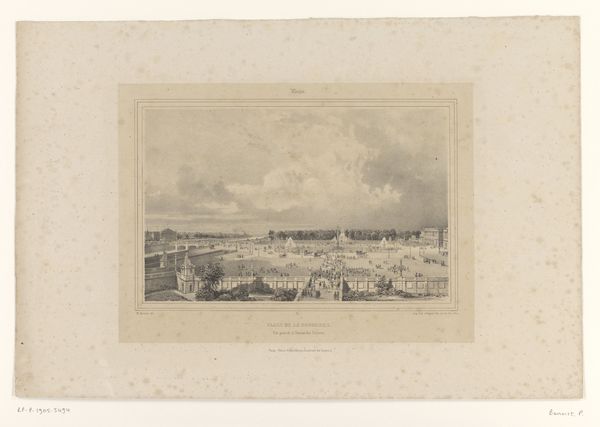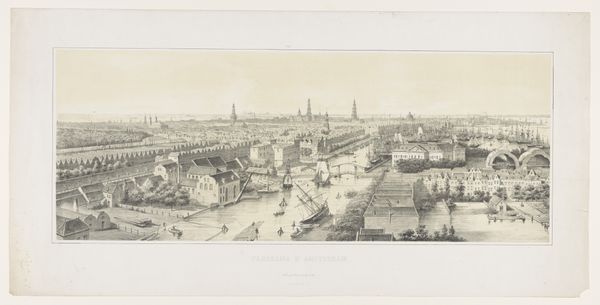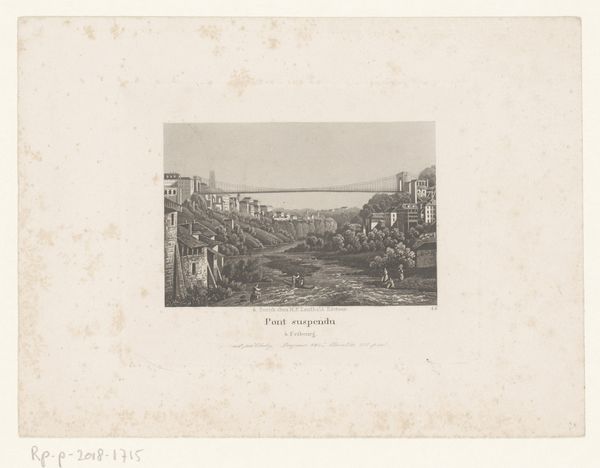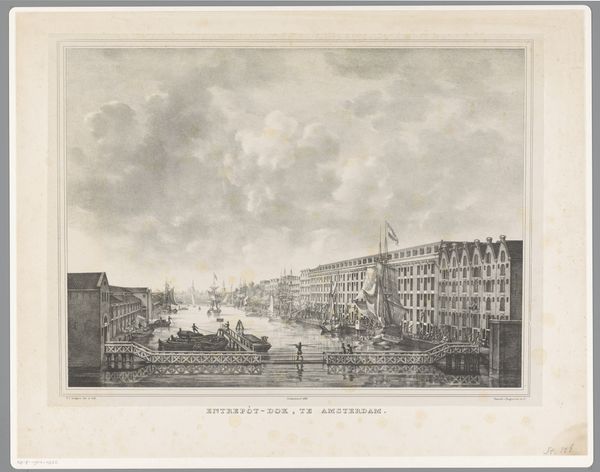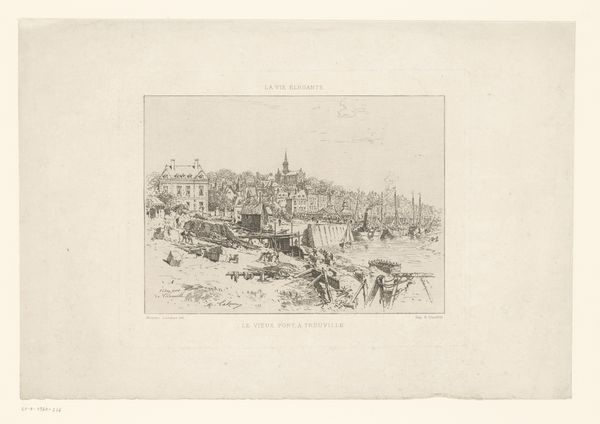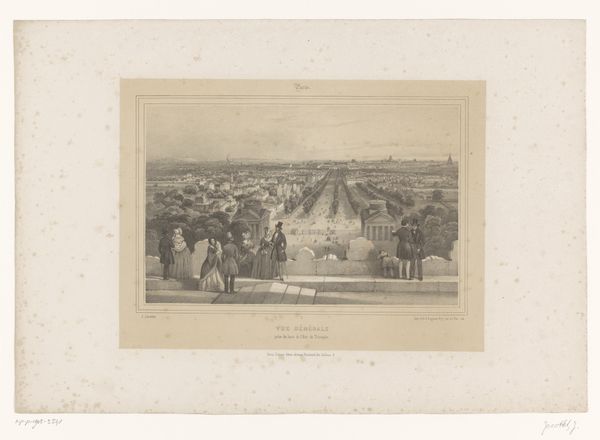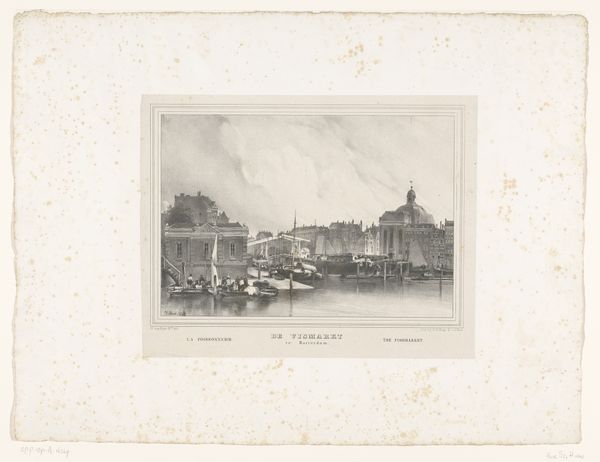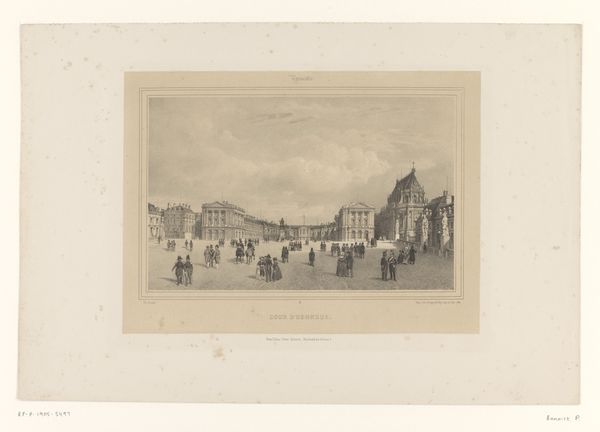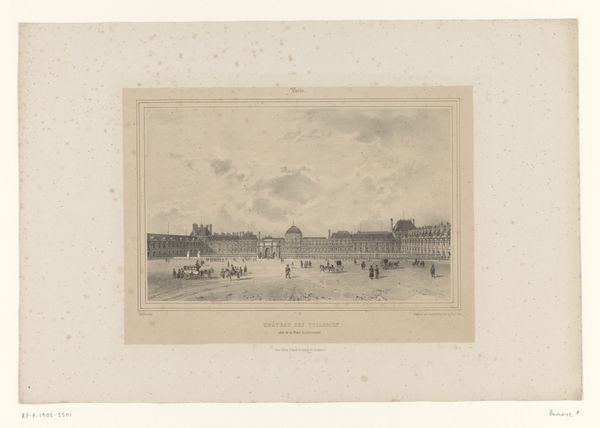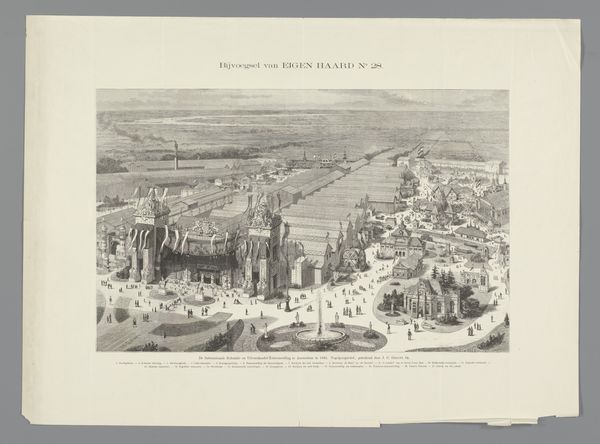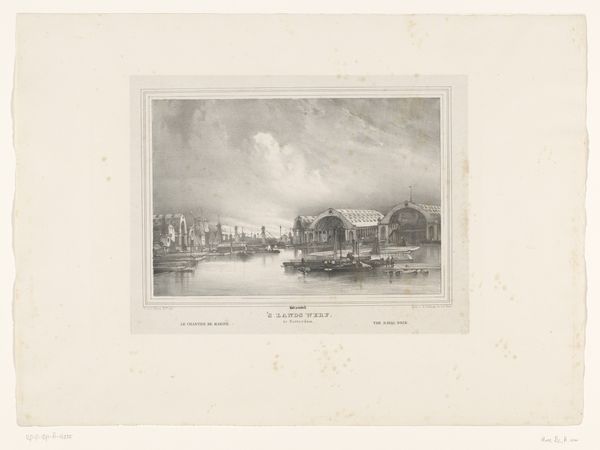
Gezicht vanaf de Zuiderkerk naar het westen van Amsterdam c. 1830 - 1860
0:00
0:00
augustuswijnantz
Rijksmuseum
#
photo of handprinted image
#
aged paper
#
pale palette
#
pastel soft colours
#
pale colours
#
ink paper printed
#
light coloured
#
white palette
#
repetition of white colour
#
soft colour palette
Dimensions: height 377 mm, width 527 mm
Copyright: Rijks Museum: Open Domain
Curator: Look at this captivating scene, "View from the Zuiderkerk to the West of Amsterdam," likely created between 1830 and 1860 by Augustus Wijnantz. Editor: Wow, what strikes me first is the incredible lightness of it all. A delicate dance of greys, almost ethereal. You can almost feel the soft Dutch light bathing the rooftops. Curator: Indeed. What's interesting here is the printmaking process. It gives us insight into how images circulated and were consumed during this period. Prints like these democratized access to city views and knowledge. The labor involved in producing the plates and paper is quite significant. Editor: That's true. It's easy to get lost in the detail, all those tiny houses, each one a life unfolding. The artist captured the density of the city while still maintaining that sense of airy tranquility. I feel almost like a bird gliding over the scene. There's something really inviting in this calm presentation, compared with more grandiose approaches. Curator: I appreciate how the materials contribute to the overall impression. The aged paper adds a layer of historical texture and value that contrasts with the modern obsession with perfection and slick production. There is a beautiful material history at play. Editor: It speaks to a different pace, doesn’t it? Looking at all the details reminds me of being a child lost in my drawings, making my own little worlds in soft tones of pencil. Each window tells a silent story, creating that subtle yet intriguing energy between stillness and teeming activity. Curator: Definitely. I find this work significant because it sheds light on the connection between urbanization, print culture, and material consumption in 19th-century Amsterdam. The print's existence and distribution contributed to how people understood and related to their own environment. Editor: Ultimately it presents Amsterdam as something of a collective dream, a harmonious, hushed, and strangely weightless metropolis. Gazing at it, I drift into daydreams about the lives within the picture—such beautiful, imaginative possibilities arise from simple monochrome impressions.
Comments
No comments
Be the first to comment and join the conversation on the ultimate creative platform.
